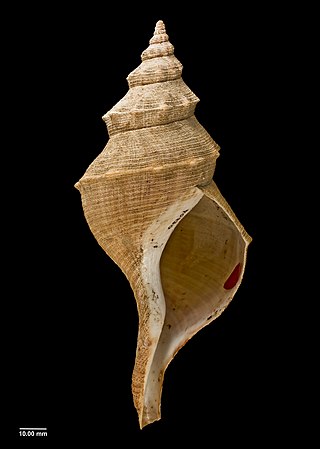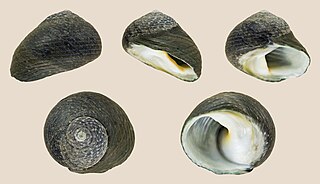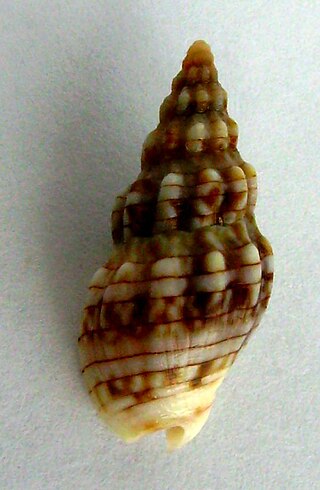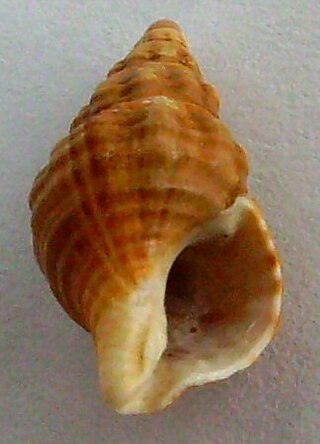
Penion cuvierianus is a species of very large predatory sea snail or whelk, commonly called the flaring penion, a marine gastropod mollusc in the family Austrosiphonidae.

Siphonaria australis is a species of air-breathing sea snail or false limpet, a marine pulmonate gastropod mollusc in the family Siphonariidae, the false limpets.

Notoacmea pileopsis, commonly known as the black-edged limpet, is a species of sea snail or true limpet, a marine gastropod mollusc in the family Lottiidae, one of the families of true limpets.

Penion sulcatus is a species of medium-to-large predatory marine snail or whelk, commonly called the northern siphon whelk or kākara nui in Māori, belonging to the whelk family Austrosiphonidae.
Thylacodes zelandicus is a species of sea snail, a worm snail or worm shell, a marine gastropod mollusc in the family Vermetidae, the worm snails. This species was previously known as Serpulorbis zelandicus.

Diloma zelandicum is a species of sea snail, a marine gastropod mollusc in the family Trochidae, the top snails or top shells.

Penion is a genus of large marine snails, commonly known as siphon whelks, classified within the mollusc family Austrosiphonidae.

Antarctoneptunea benthicola is a species of small-to-medium-sized predatory sea snail or whelk, a marine gastropod mollusc in the family Austrosiphonidae.

Penion chathamensis is a species of very large predatory sea snail or whelk, a marine gastropod mollusc in the family Austrosiphonidae.

Penion ormesi is a species of very large predatory sea snail or whelk, a marine gastropod mollusc in the family Austrosiphonidae.

Cominella is a genus of carnivorous sea snails, a marine gastropod mollusc in the family Cominellidae.

Buccinulum is a genus of sea snails, marine gastropod molluscs in the whelk family Tudiclidae.

Aeneator is a genus of sea snails, marine gastropod molluscs in the whelk family Tudiclidae.
Aeneator benthicolus is a species of large sea snail, a whelk, a marine gastropod mollusc in the family Tudiclidae.

Cominella maculosa, common name the spotted whelk, is a species of predatory sea snail, a marine gastropod mollusc in the family Cominellidae, the true whelks.

Cominella virgata is a species of predatory sea snail, a marine gastropod mollusc in the family Cominellidae.

Antarctoneptunea is a genus of sea snails, marine gastropod mollusks in the whelk family Austrosiphonidae.

Nassarius horridus, common name the horrid nassa, is a species of sea snail, a marine gastropod mollusk in the family Nassariidae, the Nassa mud snails or dog whelks.

Kelletia is a genus of large sea snails, whelks, a marine gastropod molluscs in the whelk family Austrosiphonidae.

Penion mandarinus, common name the mandarin penion, southern siphon whelk or Waite's buccinum whelk, is a species of medium-to-large predatory sea snail or whelk, a marine gastropod mollusc in the family Austrosiphonidae.


















